The assessment checklists can be found at the bottom of this page
The name you enter is the name of the classmate’s project you are reviewing.
Please Vote for the three projects that were assigned to you!
The name you enter is the name of the classmate’s project you are reviewing.
The name you enter is the name of the classmate’s project you are reviewing.
According to Laycoff (1996) every language in the world has a way in its grammar to express direct causation –a local application of force that has a local effect in place and time. For example when one drinks glass of water, the direct causation of a thirst being gone is that you did it. Direct causation is also that element that provides the teachable moment. Once your students understand this concept, they will begin to learn the importance of critically reading/viewing/listening for causation. In class we often look for the word “because” to answer these questions. Cause and effect helps transcend story into any genre, whether fiction or non-fiction and makes it a useful element in multiple disciplines. We suggest that this conceptualization of story has a place in common core… even in informational reading.
So far, we have been talking about direct causation. Indirect causation is less discernible and implies a higher order thinking skill. Discovering causation on either level can be intimidating and makes comprehension more difficult if there are more than two or three being implied in a story line. In science experiments we usually deal with only one variable. We can do more than one, which leads us to quadratic equations.. but that is another idea entirely and something we leave for another time (and course).
In summary: Causation is a significant element that needs to be embedded in the story in conjunction with other constructs that provide a means to effectively measure the relative teaching efficacy of that story.
My personal ah-ha moment in all of this occurred when I realized that the parallels between a well constructed story and a well constructed experiment/research study are almost one to one! THAT is what, for me, turned story into such an important teaching tool. Add that to the context/emotional aspect surrounding character development and empathy building, I am not sure if a better tool exists.
With that, we introduce the idea of character archetype.
We covered character archetypes in an earlier cycle. Now we correlate it back the story schema and perhaps recognize archetypes in relationship to its thru-line and adds to a story’s power as a teaching engine. Character analysis is a great teaching tool. The real value of archetypes in the story invention process is that they add to the a consistent schema… through the revelations about the main character’s make-up and his or her allowable actions (a term often used in video game design) another vehicle to add predictability.
There is a lot we can learn about character development in the story building process. Perhaps that the best way to teach you this is through an example. Many of you know Robert Redford as the actor. Most of you may not know that he is actually a better film maker than an actor. I learned this first hand when I went to work for his (ex)brother-in-law… my former Dean in an earlier appointment at another university. My Dean’s wife’s sister was once married to Redford. My Dean was an academy award winning filmmaker in his own right and he taught me about Redford’s film making career. He was the one who got me to watching Redford’s films. One in particular serves our purposes here.
Quiz Show is about the Twenty One quiz show scandals of the 1950s, in which it chronicle’s the rise and fall of popular contestant Charles Van Doren who became a national phenom when he started a protracted winning streak on that TV show after beating (it was a rigged beating) of Herb Stempel (who we also later learn was a ‘rigged’ champion). The movie stars John Turturro, Rob Morrow, and Ralph Fiennes, with Paul Scofield, David Paymer, Hank Azaria, and Christopher McDonald appearing in supporting roles.(sorry this steals one of my main questions that you will take after watching the the film… who is the starting role and who is the supporting actor? How can we tell?) Hopefully, by watching this one you will find out.
Robert Redford is the director. Redford, besides being a superb visual story teller, is a great film maker who understands character development. If it is true that events leading up to cause and effect require some type of judgment on the part of the main character, then it follows that the best ‘teachable moments’ in a story emanate from a well constructed character development thru-line. Quiz Show is one of my favorite character development movies of all time… This is because I have been able to use it in more than one occasion in several classes to demonstrate film making and visual storying both with K12 students and undergraduates. I now offer it to you as an exemplar for character development so you can get the idea that a strong correlation exists sound story constructs, character development, and teaching and learning.
Watch the movie and enjoy. When you are done, answer the self test to see for yourself whether you get my point. Then answer the survey question in Canvas to earn your points for this activity.
The movie is password protected… the password is posted on the Assignments Checklist. The self check comes at the end of the module
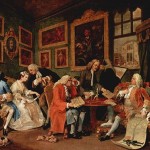 [/one_third][one_third]
[/one_third][one_third]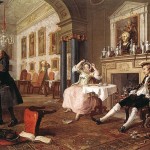 [/one_third][one_third_last]
[/one_third][one_third_last] [/one_third_last]
[/one_third_last]
[one_third]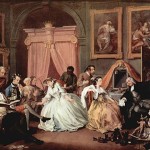 [/one_third][one_third]
[/one_third][one_third]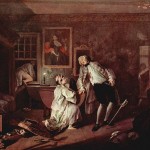 [/one_third][one_third_last]
[/one_third][one_third_last]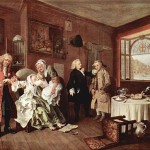 [/one_third_last]
[/one_third_last]
Your job is to:
Progressive Stories are a fun way to get children interested and excited about story-telling. It is an effective ice-breaker, even in adult situations.
For our game, you have been assigned to a team/group of three classmates Each team has the same story starter posted on a discussion board in Canvas.
To begin your story, look at the questions posed below. Then the first member of each team (as listed) continues the story by adding a segment. Responses may be text-based, or created using any one of an assortment of media types, such as audio, a short video clip you create or a flash video, a picture, or animation. When the second person is done the story is passed along to the next person, and so on.
The passing of the emerging story should be done in a linear fashion, each taking his or her turn. Follow the rotation schedule as posted below and on the What’s New page in Canvas. The process should be repeated twice. By the end of the cycle the story should have nine segments added (each team member needs to take three turns).
There are a few variations that can make this game fun. The first person could start, for example, with the word “unfortunately” for their part of the story. Their job is to think up a complication in the story. The next person could then start with the word “fortunately,” with the idea that they add a way to solve the problem. The idea is to keep the story going, adding twists and turns each time.
This is a COLLABORATIVE/GROUP assignment.
AUTOBIOGRAPHY (OF LIES)
MY NAME IS: John
I COME FROM: Eden Prairie
ALL DAY LONG I: Work as a lumberjack
AT NIGHT I: am a secret agent
This activity is intended to establish a benchmark as to where you are now with your story creation/invention skills. At the end of the term (using your final project) we will have a ‘measuring stick’ to compare to in order to see how much about all of this you have learned.
Now that we have introduced the elements of creativity into the storytelling domain, it is your turn to demonstrate some of that new learning. Borrowing from Biz Stone’s ideas on necessity being the mother of invention, your job is to create a 30-second story from the statement below. By now you should be able to tell anyone who asks why this is not a story, according to the definition definitions we have at this point. When you create your story try to insert as much as you can using Branigan, Mandler and Kintsch.
Yes I know I am not playing fair because of what I said in the lesson about providing some form of advance organizer. I am breaking that rule because I wanted to leave this wide open to see what you come up with on your own:
Once upon a time there was a man.
— The end
While you can chose any media form you want, I thought it would be fun to experiment with any one of these very easy to use products:
All products hold a 30 second maximum timeline, making them perfectly suited for our imposed limitations of creating/inventing the perfect (according to Branigan’s four principles) 30-second story. For both you can create backgrounds and design your avatars. On Tellagami you can actually use your iPad or Android to take a picture to use as the background. Voki even allows you to utilize multiple languages. Each is very easy to use and set up something very quickly. You can record your voice using a script (5 line limit).
If you insist on using text, then your limit is five sentences. Once you are done, provide a link to your story (or embed it into) in the Drop Box set up on Canvas.
Now that we have had the opportunity to review Branigan’s work and add some meat to your definition of a story, you should now be in a position to review some (non)examples to determine whether they are an actual ‘story’ based on a strict interpretation of our evolving conceptual design. Which one(s) (if any) of the videos has all 4-5 elements? Which one(s) do not? You may indicate those that are close.. remember for the purposes of this class we are defining a story as including all the elements.. certainly it is not a binary decision as most narratives we find are missing one or more elements but most folks include them in tier personal definitions anyway.. we are simply providing you some rationale to use stories in your classes and workplace
Below are five different video narratives. All were turned in during previous classes that were an assignment that asked students to create a ‘meStory’… a personal story about themselves and/or their lives. To view each video click the plus sign.
After viewing each video, please enter in the boxes that are embedded under each video whether you deem that the video is a story or not. If not, indicate in your rationale which of Branigan’s four elements is missing. One or two sentences is all that is necessary to justify your rating. When you click the Submit button, wait for the system to record your answer then move on to the next one. The system will remove the survey temporarily for the video you just reviewed.
I will share the results next cycle.
![]()